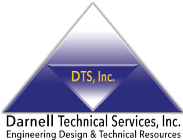Stakeholder management is the linchpin of successful project management, yet it’s an area often downplayed or overlooked. In any project, stakeholders are those individuals or groups who have vested interests in the project—be it its implementation, execution, or most importantly, its outcome.
Stakeholder Management is Not Just a Buzzword
Properly managing stakeholders is not a mere corporate buzzword; it’s a strategic necessity that can make or break a project. In today’s dynamic business environment, project managers must be adept not only at the technical and logistical aspects of managing a project but also at the complex interpersonal relationships that come with managing the spectrum of stakeholders.
There’s art to balancing these relationships effectively, and in this blog post, we’ll explore just why this is pivotal to your project’s success.
Why is Stakeholder Management Important?
Consider stakeholder management as a political campaign. Each ‘vote’ (stakeholder opinion) is crucial, and without a balance, the project could face disapproval or even resistance. But just like in a successful campaign, the key is strategic targeting, clear communication, and building relationships.
Identifying stakeholders and understanding their needs, interests, and potential impact on the project is a fundamental PM task. Successful stakeholder management enables PMs to:
- Mitigate risks associated with negative stakeholder impacts
- Involve the right stakeholders at the right time to gather the best input
- Build a network of support for project objectives
- Align stakeholder expectations with project outcomes
Keep in mind, stakeholders aren’t just higher-ups or those directly involved in the project. They can come from across the organization, or even beyond it – from customers and end-users to regulatory agencies.
Navigating the Stakeholder Matrix
A useful tool to manage stakeholders is the Stakeholder Matrix. It’s a visual representation of influence, interest, and potential impact on your project.
For each stakeholder, classify them into one of four categories:
- High Power, High Interest: These are your ‘Key Players’, those who can significantly impact your project. They need to be managed closely.
- High Power, Low Interest: These are your ‘Keep Satisfied’ stakeholders. Though their interest isn’t high, they can wield significant influence and keeping them satisfied is strategic.
- Low Power, High Interest: The ‘Keep Informed’ group. They require frequent communication, but they’re not usually the decision-makers.
- Low Power, Low Interest: The ‘Monitor’ stakeholders. They’re low impact and can be watched with little intervention.
Understanding where each stakeholder falls in this matrix will help you tailor your communication and engagement strategies.
The Compassion of Communication
Clear and consistent communication is the foundation of good stakeholder management. Each stakeholder will have a unique set of preferences regarding how they like to be communicated with, how often, and the level of detail they need.
Adapt your communication style and methods accordingly. For the C-Suite, high-level summaries may be sufficient, while your project team might require detailed technical discussions. Regular updates and reporting not only keep stakeholders informed but also demonstrate transparency and professionalism.
Proactive Engagement
Engagement, however, is not a one-way street. It’s not enough to broadcast updates; stakeholders also need to have opportunities to contribute and give feedback. This could mean involving them in project decisions, seeking their expert advice, or simply keeping them in the loop on the project’s status.
Proactive engagement ensures stakeholders feel valued and heard, which can turn potential critics into allies.
Flexibility and Adaptation
Lastly, remember that stakeholders’ interests and influence can change, especially as project dynamics evolve. Stay agile, be prepared to reassess your stakeholder management strategy, and pivot as needed.
The Bottom Line
Stakeholder management might not be the most technical aspect of project management, but it is arguably the most human. Successful management of these relationships ensures that your project not only meets its technical requirements but also aligns with the broader business objectives and secures the necessary support along the way.
Projects are more than just box-checking tasks; they are journeys with an extensive cast of characters. Nurturing these relationships is the key to delivering successful outcomes in today’s business landscape.
About Darnell Technical
Darnell Technical Services is an engineering design firm with extensive experience in a vast array of projects. Our headquarters are located in Santa Ana, California, and we have an office in Las Vegas, Nevada.
Contact us today by telephone (714-285-0082 (CA), 702-945-2899 (NV)) or through our social media accounts on Facebook, Twitter, and LinkedIn to learn more about all the technical instruments and materials we put at your disposal.








